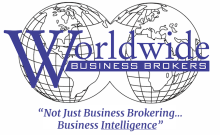22 January 2024: Valuing a Business – Methodologies
Valuing a business is one of the first steps that must be taken when the business owner begins to consider selling. But there are many more reasons to have a business valued than just selling it.
We do valuations for insurance reasons, in support of refinancing events, when partners are in disputes and many other situations. In fact, we did a post back in June 2022 detailing five of the more common reasons for having a business valued; and there are others.
Our valuation reports are generally fairly detailed – running to 20-25 pages or more – and they contain multiple methods of calculating value and we teach how to use these methods in our Course #104 as well as our Flagship Course, “Learn How to Value and SUCCESSFULLY Sell Businesses“.
__________________________________________________________________________________
Our February Live Stream in The Brokers Roundtable℠ will feature an interview and Q&A with Scott Doering, a founding Member of TBR and recipient of the Worldwide Business Brokers “Course Certified” badge, discussing his first-hand experience dealing with a private equity firm as a potential buyer for a business he’s been engaged to sell. Exact date will be posted to Announcements and Community Events.
If you’re not yet a Member of The Brokers Roundtable℠, you can find out about such future events and what other benefits Members enjoy here.
___________________________________________________________________________________
Those courses are eight hours and 19 hours long, respectively and, needless to say, far beyond the scope of a single post – or even a series of posts. But business owners often ask us how we go about valuing a business and what methods we use.
Again, a blog post is woefully inadequate to get into details but let’s take a high-level look at a couple of those methods
__________________________________________________________________________________
Courses! Courses! Courses!
Many of you have asked if our Flagship Course, “Learn How to Value and SUCCESSFULLY Sell Businesses“, could be made available on a module-by-module basis. Instead of enrolling in the complete course, could you enroll only in the module(s) you wanted? We’re happy to report that this is now possible.
We’ve broken our Flagship into six separate modules (or module groups) to give you all the flexibility you need to learn only what you want to learn – and we’ve moved them all over to the new Brokers Academy in The Brokers Roundtable℠ . The Flagship is still available but the modules are now available individually.
You don’t need to be a Member of The Brokers Roundtable℠ to access any of these courses but if you are, you’ll receive a 20% discount on any course you enroll in. If you’re not yet a member of The Brokers Roundtable℠, you can learn more – and get access to all the talent and resources – here.
___________________________________________________________________________________
Multiple of Earnings
The Multiple of Earnings approach is based on the principle that a business’s value is determined by its ability to generate profits. To use the multiple of earnings method, you must first determine the business’ true earnings and then multiply them by a predetermined multiple to arrive at the sale price.
 But the first question that must be answered is how do you determine “earnings”? What are they, specifically?
But the first question that must be answered is how do you determine “earnings”? What are they, specifically?
They’re almost never the bottom line on the profit and loss statement, not are they the taxable income number on the tax return.
Because privately owned businesses tend to keep reported profits and thus taxes as low as possible, financial recasting is an important element to understanding the earning capacity of a business. From the buyer’s standpoint, recasting allows for meaningful comparisons with other investment opportunities.
Financial recasting eliminates such items as excessive and discretionary expenses as well as nonrecurring revenues and expenses from the historical financial presentation. Also, debt and interest expense are eliminated since they reflect the financing decisions of the current owner(s) and may not represent financing preferences of a new owner. Such financial recasting results in a truer representation of the owner’s benefits and is referred to as Discretionary Earnings (DE) or Adjusted Earnings. This is the number to which the multiple is applied
The Comparables Method
Whatever business is the subject of the valuation discussion, it is highly unlikely that it is the only business of its kind in existence.
 There have been dozens of small manufacturers and plumbing companies sold in the past five years. The same can be said for eCommerce, logistics, distribution, real estate, convenience stores, auto repair, IT businesses, tire, shoe and apparel retailers, and any other business you can think of.
There have been dozens of small manufacturers and plumbing companies sold in the past five years. The same can be said for eCommerce, logistics, distribution, real estate, convenience stores, auto repair, IT businesses, tire, shoe and apparel retailers, and any other business you can think of.
When valuing a business, the Comparables Method is used to determine what similar businesses have sold for on the assumption that such information tells us what buyers have paid for similar businesses which will ,in turn, suggest what they’ll pay for the one we want to value.
Searching for and then analyzing this information takes knowledge, experience, time and patience, and is one of the main reasons God created professional business brokers.
_____________________________________________________________________________________
Our course, “Learn How to Value and SUCCESSFULLY Sell Businesses“, teaches you how to accurately value and successfully sell businesses.
Book Value
The book value method is another approach that can be used when valuing a business.
This method is based on the idea that a business’s value is determined by the value of its assets minus its liabilities. To use the book value method, you must first identify the value of the business’s individual assets and liabilities.
Identifying the business’s assets can be a laborious task. Calculating each asset’s value is often many times more challenging.
For example, what is the value of the client or customer list? What about the website, marketing initiatives or logo? The phone number and URL of most businesses have value but what is it? Unless professional appraisers with expertise in each asset category were hired – at significant expense – the work such analysis would require and the probability that the result would be highly debatable, is why the book value of a small, <$25 million business is rarely considered when calculating value.
But should one wish to take on this exercise, after calculating the value of all the assets, subtract the liabilities from the assets’ cumulative value to arrive at the book value of the business. Because this calculation is more pertinent to publicly-traded companies and used more as a research tool, we give it little weight in our work of valuing Main Street and Lower Middle market businesses.
Discounted Cash Flow Method
When valuing a business, a Discounted Cash Flow Analysis is generally used when the business has a solid history of revenue and earnings and when a substantial portion of its revenue and net income are derived from existing contracts.
 To give a clear illustration, it is most often used in the valuation and appraisal processes for commercial real estate where leases exist and net future income can be projected with some degree of accuracy.
To give a clear illustration, it is most often used in the valuation and appraisal processes for commercial real estate where leases exist and net future income can be projected with some degree of accuracy.
In business valuations, it is useful when the subject business’ future earnings are likely to be accurately estimated or significantly increased as the result of a recent event the impact of which will not be felt immediately. Examples include a recently-signed agreement to supply 30 Walmarts, a 400-unit apartment project across the street from the convenience store mentioned earlier or a 100-lot subdivision being approved for a large parcel within a short distance of a lumber or hardware retailer.
The Bottom Line
The valuation methods described above are some of the ones we use when we’re hired to value a business.
Some methods are not necessarily pertinent to all businesses so knowing which to use is important as a first step. Knowing how to use the ones chosen is next in line. And finally, knowing which of the ones used have the most relevance to the final calculations is critical to arriving at the most accurate outcome.
There are frequent discussions and Q&As about valuations in The Brokers Roundtable℠ most notably during our weekly Office Hours for Members (every Tuesday) and deep dives into specific aspects of the valuation process during our weekly Pro Sessions (every Wednesday), open to those who’ve taken our courses.
For more on valuing businesses, several of the links in this post will take you longer discussions. For questions still unanswered, join The Brokers Roundtable℠ and get direct access to the pros who do this for a living.
I’d like to hear from you. What topics would you like me to cover? How can we tailor these posts to be more useful to you and your business. Let me know in the comments box, below, or email me at
jo*@Wo*******************.com
.
If you have any questions or comments on this topic – or any topic related to business – I’d like to hear from you. Put them in the comments box below. Start the conversation and I’ll get back to you with answers or my own comments. If I get enough on one topic, I’ll address them in a future post or podcast.
I’ll be back with you again next Monday. In the meantime, I hope you have a safe and profitable week.
Joe
Searching For…
NOTE TO READERS: Our “Searching For…” feature has been moved to our online community, The Brokers Roundtable℠. It will appear there exclusively from now on.

#business #businessacquisition #sellabusiness #becomeabusinessbroker #businessbrokering #businessvaluation #MergersandAcquisitions #buyabusiness #sellabusiness #realtor #realestateagents
The author is the founder, in 2001, of Worldwide Business Brokers and holds a certification from the International Business Brokers Association (IBBA) as a Certified Business Intermediary (CBI) of which there are fewer than 600 in the world. He can be reached at
jo*@Wo*******************.com
